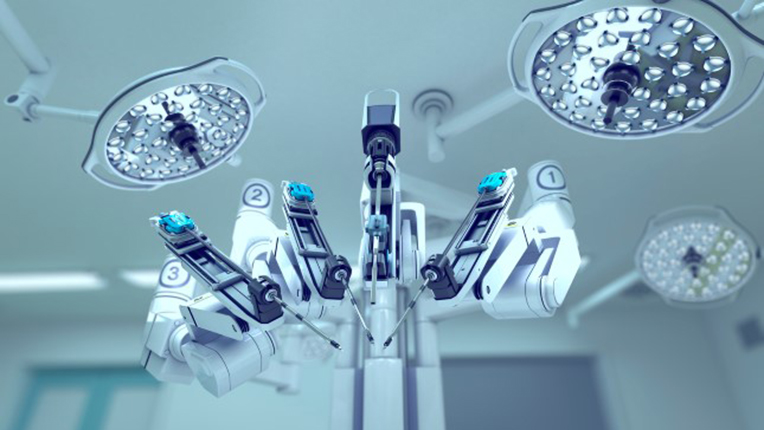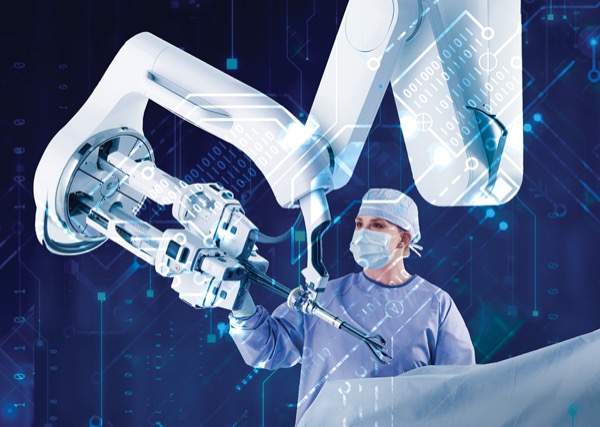Are Surgical Robots the Future of Healthcare?
Surgeons carry a considerable responsibility, and one wrong incision could cause irreparable damage or cost to a patient’s life. Technological advancement in healthcare provides surgeons with new equipment to make as few incisions as possible.
Surgical robots present an extraordinary opportunity for cooperation between technology and humans which could improve the effectiveness of surgeries to unprecedented levels. Currently, 15% of surgeries use some aspect of artificial intelligence, 3D printing, surgical robots and new imaging methods. However, only three per cent of surgical operations are carried out by robots.
We are in the age of artificial intelligence and robotics. Will surgical robots extend a surgeon’s capabilities or replace him altogether? This article shall examine the future of surgical robots in healthcare.
The Rise of Minimally Invasive Surgery
Back in the 18th century, a Glasgow physician invented a minute bulb in a tube that could be used to examine inside a body. But it took another 200 years for the much brighter fiber-optic threads to look inside the body. Later, minuscule computer chip cameras were developed to relay images back, allowing doctors to see inside a patient’s body while using tiny equipment for surgeries. This was a significant advancement in minimally invasive surgeries. Technologies such as laparoscopy and endoscopy have since revolutionized surgery.
Minimally invasive surgeries enable doctors to make fewer cuts and incisions that are more precise. Minimally invasive surgeries reduce recovery time and are less painful for the patient.
Medical device companies such as Levita Magnetics are refining and developing new procedures using their Magnetic Surgical System, which has recently received FDA approval. Levita’s Magnetic Surgical System aims to reduce incisions and improve a surgeon’s field of view by reducing shafts, thereby making the working scene clearer and easier to carry out a procedure. The system is already being used for prostatectomy (removal of the prostate in part or entirely) and cholecystectomy (removal of the gallbladder).
Another example is the next-generation medical robotics company, Vicarious Surgical, which has developed the Vicarious System, which has a remarkable functionality that replicates all a surgeon’s movements. Besides, it creates only a 1.5cm single incision that allows through a camera and two robotic arms.
The Evolution of Surgical Robotics
The first implementation of surgical robotics was for neurosurgery drilling back in 1985. The first type of surgical robot used today is the Da Vinci Surgical System. The Da Vinci Surgical System is the most popular surgical robot, introduced more than 20 years ago and has been used in more than 8 million surgeries worldwide.
The Da Vinci Surgical System features small wristed instruments capable of bending and rotating at angles more significant than any human hand. The system also has a highly magnified 3D high-definition visual system. The Da Vinci Surgical System has enabled surgeons to make fewer and smaller incisions. The system effectively assists the surgeon to suture, dissect and retract tissue.
Besides the teleoperated systems like the Da Vinci Surgical System, we have cooperative robotic systems such as the Mako SmartRobotics or Stryker that work more synergistically with the surgeon for knee osteotomy.
Pre-programmed robotic systems such as the Cyberknife System and Accuray are also used in stereotactic radiosurgery. The CyberKnife System is unique as the first fully automated device for radiation therapy. The Cyberknife System delivers precise radiation doses with tremendous accuracy while monitoring the movement of the tumor and patient in real-time. Advancement in surgical robotics is significantly increasing the precision of medical procedures.
In the future, we will see the development of more autonomous surgical robots, which will be more efficient and cut on operation costs. However, there must be equivalent progress in artificial intelligence to realize more fully autonomous surgical robots. Artificial Intelligence is progressively transforming surgery through its integration into surgical robotics.
Final Thoughts
We predict that surgical robots will continue being an integral part of surgery, systematically replacing open surgeries. However, surgical robots and other technological advancements will not make human surgeons redundant, but those doctors using technology will replace those who don’t.
Doctors and surgical robots will complement each other in ways yet unseen. But the complete transition into robotic surgery should be monitored closely, with the associated risks and benefits going through rigorous evaluation. At present, there are still some controversies regarding the use of robotic surgery.
Patient safety is paramount, and newer approaches to healthcare should be supported by high-quality and unbiased research. There should be clear advantages of using surgical robots in healthcare before widespread adoption.


3 thoughts on “Are Surgical Robots the Future of Healthcare?”